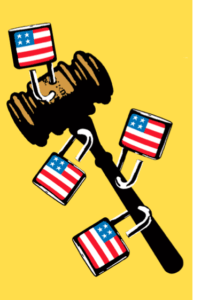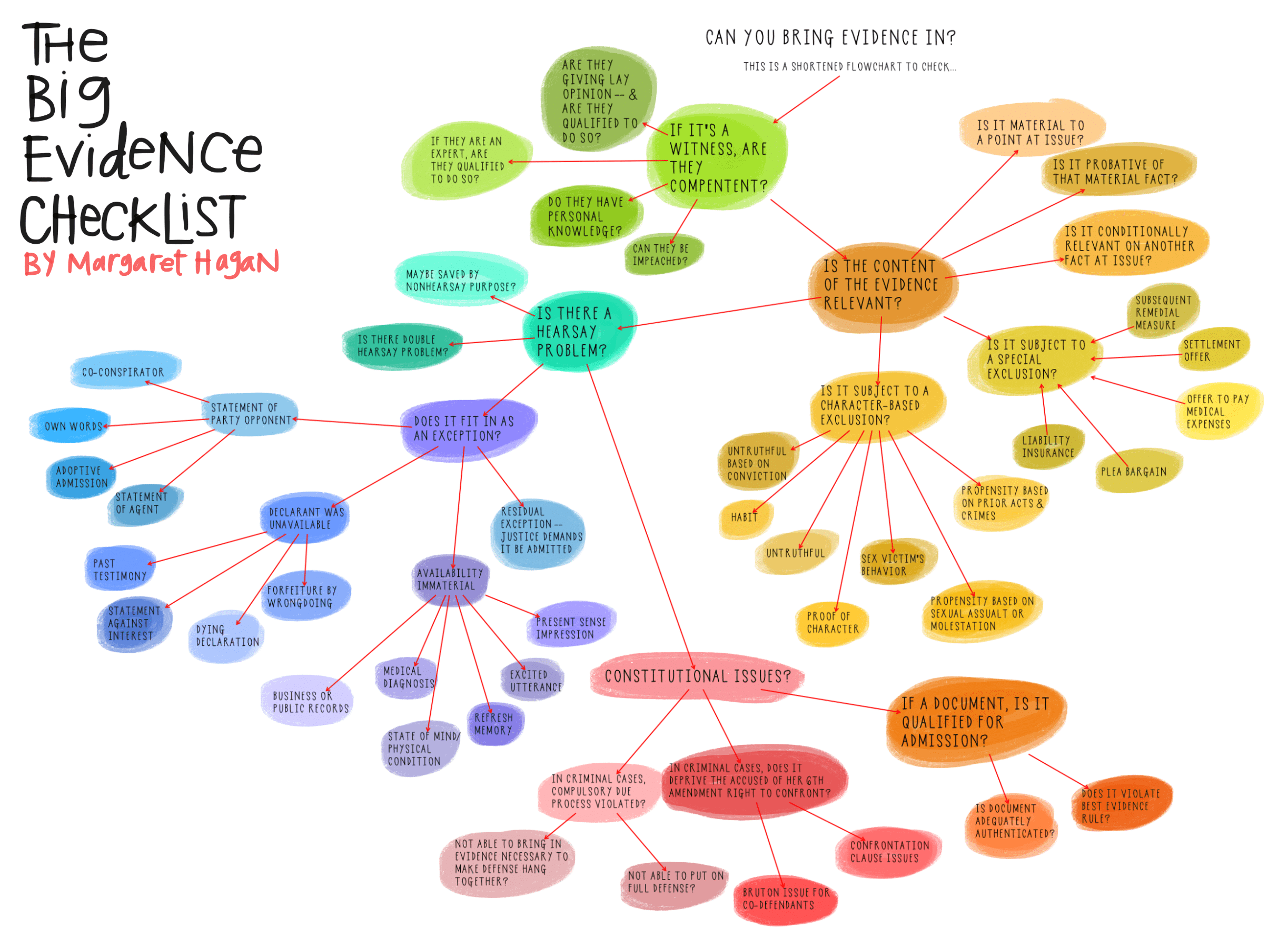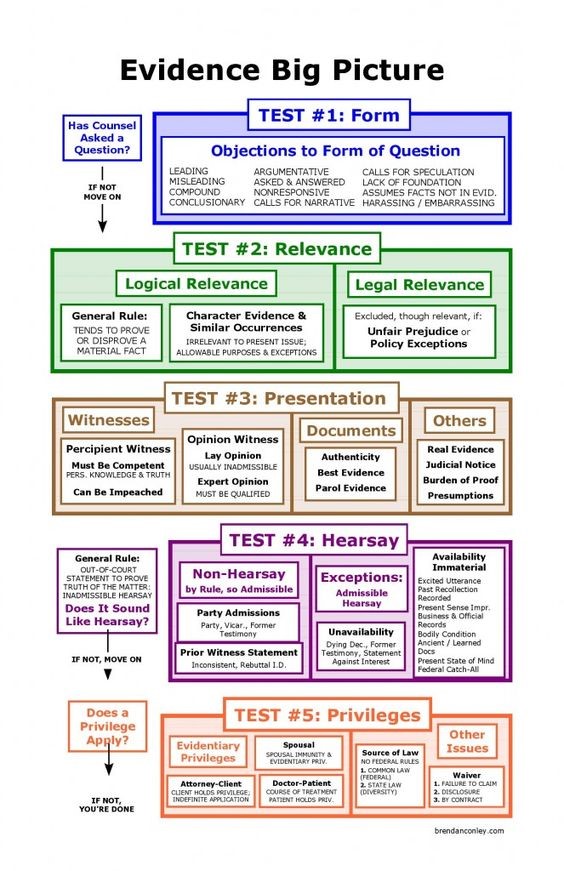Penal Code § 236 PC – False Imprisonment – California Law
California Penal Code § 236 PC defines the crime of “false imprisonment” as unlawfully restraining, detaining, or confining a person against his or her will. The offense can be charged as either a misdemeanor or felony and is punishable by up to three years in jail.
Examples
- grabbing a spouse by her shoulders during an argument and preventing her from leaving a room.
- locking a person in a closet.
- a police officer arresting and detaining a suspect without a warrant or legal authority.
Defenses
Criminal defense lawyers draw upon several defense strategies to contest false imprisonment charges. Some of these include showing:
- you had the legal authority to restrain the alleged victim,
- the “victim” consented to the imprisonment,
- you were acting in self-defense,
- the shopkeeper’s privilege applies, and/or
- you were exercising your parental rights.
Penalties
Many violations of California Penal Code Section 236 are charged as misdemeanors. The potential penalties include:
- custody in county jail for up to one year, and/or
- a maximum fine of $1,000.
A prosecutor could charge the crime as a felony if you restrained someone while using
- violence,
- menace,
- fraud or
- deceit.
Felony false imprisonment is punishable by up to three years in jail.
1. How does California law define “false imprisonment”?
California’s false imprisonment laws set forth two forms of false imprisonment. These include:
- misdemeanor false imprisonment, and
- felony false imprisonment.
A prosecutor must prove the following elements to convict you of misdemeanor false imprisonment successfully:
- you intentionally and unlawfully restrained, detained, or confined a person, and
- your act made that person stay or go somewhere against that person’s will.1
Example: Married couple Patty and Harry are having a fight while in their car. Harry tries to leave but Patty turns on the child’s lock so Harry cannot escape.
This qualifies as misdemeanor false imprisonment because Harry is deprived of his freedom of movement against his will. Even if Patty unlocks the door after a few seconds, she could still face charges for the short time she held Harry in the car against his will.
For felony false imprisonment, a prosecutor must prove the following to secure a conviction:
- you intentionally and unlawfully restrained, confined, or detained someone by violence, menace, fraud, or deceit, and
- you made the other person stay or go somewhere against that person’s will.2
A few definitions here are helpful:
- an act is done “against a person’s will” if that person does not consent to the act. To consent, a person must act freely and voluntarily and know the nature of the act.3
- “violence” means using physical force that is greater than the force reasonably necessary to restrain someone. Violence may include forms of domestic violence.4
- “menace” means a verbal or physical threat of harm, including using a deadly weapon. The threat of harm may be express or implied.5
Example: Married couple Patty and Harry are having a fight at home. Harry tries to leave, but Patty threatens to shoot him if he does, so Harry stays put. This qualifies as felony false imprisonment because Patty used “menace” to restrain Harry’s liberty.
Note that false imprisonment does not require that the person being restrained be confined in jail or state prison. False imprisonment can occur in any location.
Also note that false imprisonment is a general intent crime. This means you can be convicted of this crime even if you did not intend to confine someone unlawfully. All that matters is that your intentional actions resulted in the person being unlawfully confined.6
Example: Beth pranks Ben by telling him there was a chemical attack, and they take refuge in Beth’s basement for several hours. Beth never specifically intended to confine Ben against his will, though her lie made Ben think it was unsafe to leave. Therefore, Beth could face charges for false imprisonment.
2. What are some common defenses to Penal Code 236 PC?
You have the right to contest a charge of false imprisonment by raising a legal defense.
Six common defenses include:
- legal authority to restrain.
- consent.
- self-defense.
- shopkeeper’s privilege.
- parental rights.
- false allegations
2.1. Legal authority to restrain
This defense is often raised by police officers or law enforcement personnel in false imprisonment cases involving unlawful arrests and detainments. There can be no false imprisonment if you have the legal authority to restrain another person.
For example, a police officer will not face PC 236 charges if he stops and arrests a person while acting according to a valid arrest warrant.
Sometimes a civilian has the right to restrain another person by making a lawful citizen’s arrest.
2.2. Consent
It is always a valid defense for you to show that the so-called victim was there voluntarily and consented to be
- restrained,
- detained, or
- confined.
Helpful evidence to demonstrate consent may include:
- video or audio recordings,
- written communications (such as text messages or email), and
- eyewitness testimony.
2.3. Self-defense
California law allows you to use proportional force in defense of yourself and others if you reasonably believe in good faith that you or others are about to sustain immediate or great bodily injury.
If the victim was threatening to injure themself or commit suicide, you could claim “defense of others” if you confined them to a space where they could not inflict self-harm (and you then contacted help as soon as possible).
2.4. Shopkeeper’s privilege
This defense is available to store owners and shopkeepers who have probable cause that a customer is guilty of shoplifting. The privilege allows you to detain the suspect to investigate. The investigation, though, must be carried out
- for a reasonable time and
- in a reasonable manner.7
“Reasonableness” will be determined by the facts of a specific case.
2.5. Parental rights
Parents have the right to discipline their children in ways that restrict their freedom of movement, such as
- “grounding” them or
- imposing “timeouts.”
As long as the children do not sustain injuries or undue suffering, you can lawfully confine your children against their will. This also ensures that you are not acting with any criminal or malicious intent.
2.6. False allegations
Perhaps someone is falsely accusing you out of anger, jealousy, revenge, or a misunderstanding. Or perhaps you are a victim of mistaken identity, and the victim incorrectly picked you out of a lineup.
Video and eyewitness evidence would be invaluable for proving you did nothing wrong.

A violation of PC 236 can result in a fine and/or jail time.
3. What are the penalties?
California Penal Code 237 is the State’s statute that sets forth the penalties for false imprisonment. Under this section, false imprisonment is a type of wobbler offense, meaning that it can be punished as either
- a misdemeanor or
- a felony.
Misdemeanor false imprisonment, which is false imprisonment accomplished without violence or menace, is punishable by:
- a fine not exceeding $1,000, and/or
- imprisonment in the county jail for not more than one year.8
False imprisonment will be charged as a felony when the crime is effected by violence, menace, fraud, or deceit.
Felony false imprisonment is punishable by up to three years in jail and up to $10,000.9 The maximum sentence is four years if the victim was :
- an elderly person, or
- a dependent adult.10
Note sentencing enhancements apply to this crime:
| Aggravating factor | Additional prison sentence |
| The false imprisonment was done for a criminal street gang’s benefit | 4 years to life depending on the circumstances of the case 11 |
| A gun was used | 10 years 12 |
| A gun was discharged | 25 years 13 |
| The victim was seriously injured by a gun | Life 13 |
PC 236 FALSE IMPRISONMENT LAW – CALIFORNIA PENAL CODE 236
The crime of “false imprisonment” is described under California Penal Code 236. A false imprisonment charge can be filed against you in a situation where you unlawfully deprive someone of their personal liberty. This essentially means intentionally detaining another person without a legal right to do so, and they aren’t allowed to leave when they want to. This would be considered falsely imprisoned.
Penal Code 236 false imprisonment is similar to Penal Code 207 kidnapping charges. However, a kidnapping charge requires moving someone a substantial distance. When someone is simply held or restrained against their will, it’s a false imprisonment offense.
Our criminal defense lawyers have seen a wide range of situations where individuals have been charged with PC 236 false imprisonment. For example, these criminal charges are common in domestic violence incidents. For instance, during a heated confrontation, a husband might grab his wife to prevent her from leaving the home.
Another Penal Code 236 false imprisonment offense includes a situation where married couples are riding in a car and become involved in a heated argument. The wife, wanting to get away from the argument asks to be let out of the vehicle.
The husband refuses and continues with the confrontation. In this scenario, this act could be considered the crime of false imprisonment.
It should be noted that PC 236 false imprisonment can be charged when confinement, detention, or restraint only lasted for a short amount of time.
It’s also important to note that while a false imprisonment charge is not considered as serious as a kidnapping charge, it is still a serious offense that can carry harsh penalties.
Penal Code 236 false imprisonment is a California “wobbler” offense that can be charged as either a misdemeanor or felony crime, depending on the facts and circumstances of the case. Aggravated trespassing is defined under Penal Code 601 PC.
To give readers a better understanding of false imprisonment law described under Penal Code 236, our criminal defense attorneys are providing an overview below.
DEFINITION OF PENAL CODE 236 FALSE IMPRISONMENT
California Penal Code 236 PC defines false imprisonment as the unlawful violation of the personal liberty of someone else. To violate someone’s person’s liberty means a sustained restriction of their freedom using violence, duress, fraud, deceit.
It also includes using a threat of unlawful injury in circumstances where someone receiving the threat reasonably believes the person making the threat has the ability to carry it out.
In order for the prosecutor to convict you of misdemeanor a false imprisonment charge, they must be able to prove all the elements of the crime listed under CALCRIM 1242 Jury Instructions:
- You intentionally and unlawfully detained, restrained, or confined someone
- Your act made someone stay or go somewhere against their will
An act is done against someone’s will if that person didn’t consent to the act freely and voluntarily and knew the nature of the act.
PENALTIES FOR PENAL CODE 236 FALSE IMPRISONMENT
If convicted of Penal Code 236 false imprisonment, it’s normally a misdemeanor offense that carries up to one year in a county jail, and fine up to $1,000.
However, you could face felony false imprisonment charges, see CALCRIM 1240, if violence, menace, fraud, or deceit was used in the restraint. Menace is the threat of violence, but doesn’t always have to be verbal threats, but could be implied by your behavior.
If convicted of a PC 236 felony crime, you are facing up to three years in a California state prison, and a fine up to $10,000. source

California Penal Code 236/237: False Imprisonment
Legal Definition: False imprisonment is the unlawful violation of the personal liberty of another.
For a person to be convicted of a violation of PC 236 the prosecution must prove the following:
- You intentionally and unlawfully restrained/detained/confined a person; AND
- Your act made that person stay or go somewhere against that person’s will.
What does this mean?
This doesn’t mean what you may think because of the word Imprisonment – there is no actual requirement that the person is actually restrained in some kind of jail or prison. For this charge to be a felony, in addition to the above, you must also use violence or menace against the other party you’re restraining. Violence in false imprisonment means when you use physical force against a person that is greater than the amount necessary to restrain a person. Menace means verbal or threatening actions that expressly/impliedly communicate a threat of harm. An example of using violence could be physically grabbing and holding another person, making them unable to leave. Using menace would be you telling another person that if they move, you will kill them.
The charge itself is relatively straightforward, it simply means you would allow another person to leave against their will, and without their consent. An act is done against a person’s will if that person does not consent to the act. In order to consent, a person must act freely and voluntarily and know the nature of the act.
Penalties
PC 236 is a wobbler offense. A wobbler offense is one that, based on certain mitigating or aggravating facts, can be charged as a misdemeanor offense, or a felony offense. If you are convicted of a misdemeanor offense, you could be sentenced to up to one year in County Jail. If you are convicted of a felony offense, you could be sentenced for upwards of 16 months, two years or three years in State Prison. You would be required to serve 50% of that sentence.
Common Defenses
- Statute of Limitations
- Insufficient Evidence
- Mistake of Fact
- Violation of your Rights
One of the most common ways to defend against this crime is to attack the allegation that you used violence or menace to restrain a person. Menace is easily dispelled if you never say anything to the other person. Violence is almost always arguable, but certain factors that matter are the size of yourself, and the victim, the history and relationship between you and the other party, and whether you have made threats to the other person in the past.
To Learn More…. Read MORE Below and click the links Below
Abuse & Neglect – The Mandated Reporters (Police, D.A & Medical & the Bad Actors)
Mandated Reporter Laws – Nurses, District Attorney’s, and Police should listen up
If You Would Like to Learn More About: The California Mandated Reporting LawClick Here
To Read the Penal Code § 11164-11166 – Child Abuse or Neglect Reporting Act – California Penal Code 11164-11166Article 2.5. (CANRA) Click Here
Mandated Reporter formMandated ReporterFORM SS 8572.pdf – The Child Abuse
ALL POLICE CHIEFS, SHERIFFS AND COUNTY WELFARE DEPARTMENTS INFO BULLETIN:
Click Here Officers and DA’s for (Procedure to Follow)
It Only Takes a Minute to Make a Difference in the Life of a Child learn more below
You can learn more here California Child Abuse and Neglect Reporting Law its a PDF file
Learn More About Police, The Government Officials and You….
$$ Retaliatory Arrests and Prosecution $$
Anti-SLAPP Law in California
Freedom of Assembly – Peaceful Assembly – 1st Amendment Right
Supreme Court sets higher bar for prosecuting threats under First Amendment 2023 SCOTUS
We also have the Brayshaw v. City of Tallahassee – 1st Amendment – Posting Police Address
We also have the Publius v. Boyer-Vine –1st Amendment – Posting Police Address
We also have the Lozman v. City of Riviera Beach, Florida (2018) – 1st Amendment – Retaliatory Police Arrests
We also have the Nieves v. Bartlett (2019) – 1st Amendment – Retaliatory Police Arrests
We also have the Hartman v. Moore (2006) – 1st Amendment – Retaliatory Police Arrests
Retaliatory Prosecution Claims Against Government Officials – 1st Amendment
We also have the Reichle v. Howards (2012) – 1st Amendment – Retaliatory Police Arrests
Retaliatory Prosecution Claims Against Government Officials – 1st Amendment
Can You Annoy the Government? – 1st Amendment
Freedom of the Press – Flyers, Newspaper, Leaflets, Peaceful Assembly – 1$t Amendment – Learn More Here
Vermont’s Top Court Weighs: Are KKK Fliers – 1st Amendment Protected Speech
We also have the Insulting letters to politician’s home are constitutionally protected, unless they are ‘true threats’ – Letters to Politicians Homes – 1st Amendment
We also have the First Amendment Encyclopedia very comprehensive – 1st Amendment
Paglia & Associates Construction v. Hamilton – Public Internet Posts & Public Criticisms – Bad Reviews – 1st Amendment
Learn More About True Threats Here below….
Counterman v. Colorado – Supreme Court sets higher bar for prosecuting threats under First Amendment
We also have the The Brandenburg v. Ohio (1969) – 1st Amendment
CURRENT TEST = We also have the The ‘Brandenburg test’ for incitement to violence – 1st Amendment
We also have the The Incitement to Imminent Lawless Action Test– 1st Amendment
We also have the True Threats – Virginia v. Black is most comprehensive Supreme Court definition – 1st Amendment
We also have the Watts v. United States – True Threat Test – 1st Amendment
We also have the Clear and Present Danger Test – 1st Amendment
We also have the Gravity of the Evil Test – 1st Amendment
We also have the Elonis v. United States (2015) – Threats – 1st Amendment
Learn More About What is Obscene…. be careful about education it may enlighten you
We also have the Miller v. California – 3 Prong Obscenity Test (Miller Test) – 1st Amendment
We also have the Obscenity and Pornography – 1st Amendment
Mi$Conduct – Pro$ecutorial Mi$Conduct Prosecutor$
Attorney Rule$ of Engagement – Government (A.K.A. THE PRO$UCTOR) and Public/Private Attorney
What is a Fiduciary Duty; Breach of Fiduciary Duty
The Attorney’s Sworn Oath
Malicious Prosecution / Prosecutorial Misconduct – Know What it is!
New Supreme Court Ruling – makes it easier to sue police
Possible courses of action Prosecutorial Misconduct
Misconduct by Judges & Prosecutor – Rules of Professional Conduct
Functions and Duties of the Prosecutor – Prosecution Conduct
Standards on Prosecutorial Investigations – Prosecutorial Investigations
Information On Prosecutorial Discretion
Why Judges, District Attorneys or Attorneys Must Sometimes Recuse Themselves
Fighting Discovery Abuse in Litigation – Forensic & Investigative Accounting – Click Here
Criminal Motions § 1:9 – Motion for Recusal of Prosecutor
Pen. Code, § 1424 – Recusal of Prosecutor
Removing Corrupt Judges, Prosecutors, Jurors and other Individuals & Fake Evidence from Your Case
National District Attorneys Association puts out its standards
National Prosecution Standards – NDD can be found here
The Ethical Obligations of Prosecutors in Cases Involving Postconviction Claims of Innocence
ABA – Functions and Duties of the Prosecutor – Prosecution Conduct
Prosecutor’s Duty Duty to Disclose Exculpatory Evidence Fordham Law Review PDF
Chapter 14 Disclosure of Exculpatory and Impeachment Information PDF
Mi$Conduct – Judicial Mi$Conduct Judge$
Prosecution Of Judges For Corrupt Practice$
Code of Conduct for United States Judge$
Disqualification of a Judge for Prejudice
Judicial Immunity from Civil and Criminal Liability
Recusal of Judge – CCP § 170.1 – Removal a Judge – How to Remove a Judge
l292 Disqualification of Judicial Officer – C.C.P. 170.6 Form
How to File a Complaint Against a Judge in California?
Commission on Judicial Performance – Judge Complaint Online Form
Why Judges, District Attorneys or Attorneys Must Sometimes Recuse Themselves
Removing Corrupt Judges, Prosecutors, Jurors and other Individuals & Fake Evidence from Your Case
DUE PROCESS READS>>>>>>
Due Process vs Substantive Due Process learn more HERE
Understanding Due Process – This clause caused over 200 overturns in just DNA alone Click Here
Mathews v. Eldridge – Due Process – 5th, & 14th Amendment
Mathews Test – 3 Part Test– Amdt5.4.5.4.2 Mathews Test
“Unfriending” Evidence – 5th Amendment
At the Intersection of Technology and Law
We also have the Introducing TEXT & EMAIL Digital Evidence in California Courts – 1st Amendment
so if you are interested in learning about Introducing Digital Evidence in California State Courts
click here for SCOTUS rulings
Right to Travel freely – When the Government Obstructs Your Movement – 14th Amendment & 5th Amendment
What is Probable Cause? and.. How is Probable Cause Established?
Misuse of the Warrant System – California Penal Code § 170 – Crimes Against Public Justice – 4th, 5th, & 14th Amendment
What Is Traversing a Warrant (a Franks Motion)?
Dwayne Furlow v. Jon Belmar – Police Warrant – Immunity Fail – 4th, 5th, & 14th Amendment
Obstruction of Justice and Abuse of Process
What Is Considered Obstruction of Justice in California?
ARE PEOPLE LYING ON YOU?
CAN YOU PROVE IT? IF YES…. THEN YOU ARE IN LUCK!
Penal Code 115 PC – Filing a False Document in California
Penal Code 118 PC – California Penalty of “Perjury” Law
Federal Perjury – Definition by Law
Penal Code 132 PC – Offering False Evidence
Penal Code 134 PC – Preparing False Evidence
Crimes Against Public Justice
Penal Code 118.1 PC – Police Officer$ Filing False Report$
Spencer v. Peters– Police Fabrication of Evidence – 14th Amendment
Lying Cop or Citizen – PC 129 – Preparing False Statement or Report Under Oath
Penal Code 132 PC – Offering False Evidence
Penal Code 134 PC – Preparing False Evidence
Penal Code 135 PC – Destroying or Concealing Evidence
Lying Cop or Citizen – PC 129 – Preparing False Statement or Report Under Oath
Penal Code 141 PC – Planting or Tampering with Evidence in California
Penal Code 142 PC – Peace Officer Refusing to Arrest or Receive Person Charged with Criminal Offense
PC 146 Penal Code – False Arrest
Penal Code 148.5 PC – Making a False Police Report in California
Misuse of the Warrant System – California Penal Code § 170
Penal Code 182 PC – “Criminal Conspiracy” Laws & Penalties
Penal Code § 236 PC – False Imprisonment
Penal Code 664 PC – “Attempted Crimes” in California
Penal Code 31 PC – Aiding and Abetting Laws
Penal Code 32 PC – Accessory After the Fact
What is Abuse of Process?
What is a Due Process Violation? – 4th Amendment & 14th Amendment
What’s the Difference between Abuse of Process, Malicious Prosecution and False Arrest?
Defeating Extortion and Abuse of Process in All Their Ugly Disguises
The Use and Abuse of Power by Prosecutors (Justice for All)
Misconduct by Government Know Your Rights Click Here
Under 42 U.S.C. $ection 1983 – Recoverable Damage$
42 U.S. Code § 1983 – Civil Action for Deprivation of Right$
18 U.S. Code § 242 – Deprivation of Right$ Under Color of Law
18 U.S. Code § 241 – Conspiracy against Right$
Section 1983 Lawsuit – How to Bring a Civil Rights Claim
Suing for Misconduct – Know More of Your Right$
Police Misconduct in California – How to Bring a Lawsuit
How to File a complaint of Police Misconduct? (Tort Claim Forms here as well)
Deprivation of Rights – Under Color of the Law
What is Sua Sponte and How is it Used in a California Court?
Removing Corrupt Judges, Prosecutors, Jurors
and other Individuals & Fake Evidence from Your Case
Anti-SLAPP Law in California
Freedom of Assembly – Peaceful Assembly – 1st Amendment Right
How to Recover “Punitive Damages” in a California Personal Injury Case
Pro Se Forms and Forms Information(Tort Claim Forms here as well)
What is Tort?
Tort Claims Form
File Government Claim for Eligible Compensation
Complete and submit the Government Claim Form, including the required $25 filing fee or Fee Waiver Request, and supporting documents, to the GCP.
See Information Guides and Resources below for more information.
Tort Claims – Claim for Damage, Injury, or Death (see below)
Federal – Federal SF-95 Tort Claim Form Tort Claim online here or download it here or here from us
California – California Tort Claims Act – California Tort Claim Form Here or here from us
Complaint for Violation of Civil Rights (Non-Prisoner Complaint) and also UNITED STATES DISTRICT COURT PDF
Taken from the UNITED STATES DISTRICT COURT FOR THE EASTERN DISTRICT OF CALIFORNIA Forms source
WRITS and WRIT Types in the United States
How do I submit a request for information?
To submit a request send the request via mail, fax, or email to the agency. Some agencies list specific departments or people whose job it is to respond to PRA requests, so check their websites or call them for further info. Always keep a copy of your request so that you can show what you submitted and when.
Templates for Sample Requests
Incident Based Request: Use this template if you want records related to a particular incident, like the investigative record for a specific police shooting, an arrest where you believe an officer may have been found to have filed a false report, or to find out whether complaint that an officer committed sexual assault was sustained.
ACLU Download Word document | ACLU Download PDF
or from us Download Word document | or from us Download PDF
Officer Based Request: Use this template if you want to find any public records of misconduct related to a particular officer or if he or she has been involved in past serious uses of force.
ACLU Download Word document | ACLU Download PDF
or from us Download Word document | or from us Download PDF
The First Amendment Coalition also has some useful information to help explain the PRA process.
Sample Letter | SB 1421 & SB 16 Records
Appealing/Contesting Case/Order/Judgment/Charge/ Suppressing Evidence
First Things First: What Can Be Appealed and What it Takes to Get Started – Click Here
Options to Appealing– Fighting A Judgment Without Filing An Appeal Settlement Or Mediation
Cal. Code Civ. Proc. § 1008 Motion to Reconsider
Penal Code 1385 – Dismissal of the Action for Want of Prosecution or Otherwise
Penal Code 1538.5 – Motion To Suppress Evidence in a California Criminal Case
CACI No. 1501 – Wrongful Use of Civil Proceedings
Penal Code “995 Motions” in California – Motion to Dismiss
WIC § 700.1 – If Court Grants Motion to Suppress as Evidence
Suppression Of Exculpatory Evidence / Presentation Of False Or Misleading Evidence – Click Here
Notice of Appeal — Felony (Defendant) (CR-120) 1237, 1237.5, 1538.5(m) – Click Here
California Motions in Limine – What is a Motion in Limine?
Petition for a Writ of Mandate or Writ of Mandamus (learn more…)
PC 1385 – Dismissal of the Action for Want of Prosecution or Otherwise
Retrieving Evidence / Internal Investigation Case
Pitchess Motion & the Public Inspection of Police Records
Conviction Integrity Unit (“CIU”) of the Orange County District Attorney OCDA – Click Here
Fighting Discovery Abuse in Litigation – Forensic & Investigative Accounting – Click Here
Orange County / LA County Data, BodyCam, Police Report, Incident Reports,
and all other available known requests for data below:
SEARCH SB-1421 SB-16 Incidents of LA County, Oakland
California Senate Bill 16 (SB 16) – 2023-2024 – Peace officers: Release of Records
APPLICATION TO EXAMINE LOCAL ARREST RECORD UNDER CPC 13321 Click Here
Learn About Policy 814: Discovery Requests OCDA Office – Click Here
Request for Proof In-Custody Form Click Here
Request for Clearance Letter Form Click Here
Application to Obtain Copy of State Summary of Criminal HistoryForm Click Here
Request Authorization Form Release of Case Information – Click Here
Texts / Emails AS EVIDENCE: Authenticating Texts for California Courts
Can I Use Text Messages in My California Divorce?
Two-Steps And Voila: How To Authenticate Text Messages
How Your Texts Can Be Used As Evidence?
California Supreme Court Rules:
Text Messages Sent on Private Government Employees Lines
Subject to Open Records Requests
case law: City of San Jose v. Superior Court – Releasing Private Text/Phone Records of Government Employees
Public Records Practices After the San Jose Decision
The Decision Briefing Merits After the San Jose Decision
Rules of Admissibility – Evidence Admissibility
Confrontation Clause – Sixth Amendment
Exceptions To The Hearsay Rule – Confronting Evidence
Prosecutor’s Obligation to Disclose Exculpatory Evidence
Successful Brady/Napue Cases – Suppression of Evidence
Cases Remanded or Hearing Granted Based on Brady/Napue Claims
Unsuccessful But Instructive Brady/Napue Cases
ABA – Functions and Duties of the Prosecutor – Prosecution Conduct
Frivolous, Meritless or Malicious Prosecution – fiduciary duty
Section 832.7 – Peace officer or custodial officer personnel records
Senate Bill No. 1421 – California Public Records Act
Assembly Bill 748 Makes Video Evidence Captured by Police Agencies Subject to Disclosure as Public Records
SB 2, Creating Police Decertification Process and Expanding Civil Liability Exposure
The Right To Know: How To Fulfill The Public’s Right Of Access To Police Records
How Access to California Police Records
Los Angeles County Sheriff’s Department SB-1421 Records
SB1421 – Form Access to California Police Records
California Statewide CPRA Requests Submit a CPRA Request
Electronic Audio Recording Request of OC Court Hearings
CPRA Public Records Act Data Request – Click Here
Here is the Public Records Service Act Portal for all of CALIFORNIA Click Here
Police BodyCam Footage Release
Cleaning Up Your Record
Tossing Out an Inferior Judgement – When the Judge Steps on Due Process – California Constitution Article VI – Judicial Section 13
Penal Code 851.8 PC – Certificate of Factual Innocence in California
Petition to Seal and Destroy Adult Arrest Records – Download the PC 851.8 BCIA 8270 Form Here
SB 393: The Consumer Arrest Record Equity Act – 851.87 – 851.92 & 1000.4 – 11105 – CARE ACT
Expungement California – How to Clear Criminal Records Under Penal Code 1203.4 PC
How to Vacate a Criminal Conviction in California – Penal Code 1473.7 PC
Seal & Destroy a Criminal Record
Cleaning Up Your Criminal Record in California (focus OC County)
Governor Pardons –What Does A Governor’s Pardon Do
How to Get a Sentence Commuted (Executive Clemency) in California
How to Reduce a Felony to a Misdemeanor – Penal Code 17b PC Motion
PARENT CASE LAW
RELATIONSHIP WITH YOUR CHILDREN &
YOUR CONSTITUIONAL RIGHT$ + RULING$
YOU CANNOT GET BACK TIME BUT YOU CAN HIT THOSE IMMORAL NON CIVIC MINDED PUNKS WHERE THEY WILL FEEL YOU = THEIR BANK
Family Law Appeal – Learn about appealing a Family Court Decision Here
9.3 Section 1983 Claim Against Defendant as (Individuals) — 14th Amendment this CODE PROTECT$ all US CITIZEN$
Amdt5.4.5.6.2 – Parental and Children’s Rights“> – 5th Amendment this CODE PROTECT$ all US CITIZEN$
9.32 – Interference with Parent / Child Relationship – 14th Amendment this CODE PROTECT$ all US CITIZEN$
California Civil Code Section 52.1
Interference with exercise or enjoyment of individual rights
Parent’s Rights & Children’s Bill of Rights
SCOTUS RULINGS FOR YOUR PARENT RIGHTS
SEARCH of our site for all articles relating for PARENTS RIGHTS Help!
Child’s Best Interest in Custody Cases
Are You From Out of State (California)? FL-105 GC-120(A)
Declaration Under Uniform Child Custody Jurisdiction and Enforcement Act (UCCJEA)
Learn More:Family Law Appeal
Necessity Defense in Criminal Cases
Can You Transfer Your Case to Another County or State With Family Law? – Challenges to Jurisdiction
Venue in Family Law Proceedings
GRANDPARENT CASE LAW
Do Grandparents Have Visitation Rights? If there is an Established Relationship then Yes
Third “PRESUMED PARENT” Family Code 7612(C) – Requires Established Relationship Required
Cal State Bar PDF to read about Three Parent Law –
The State Bar of California family law news issue4 2017 vol. 39, no. 4.pdf
Distinguishing Request for Custody from Request for Visitation
Troxel v. Granville, 530 U.S. 57 (2000) – Grandparents – 14th Amendment
S.F. Human Servs. Agency v. Christine C. (In re Caden C.)
9.32 Particular Rights – Fourteenth Amendment – Interference with Parent / Child Relationship
Child’s Best Interest in Custody Cases
When is a Joinder in a Family Law Case Appropriate? – Reason for Joinder
Joinder In Family Law Cases – CRC Rule 5.24
GrandParents Rights To Visit
Family Law Packet OC Resource Center
Family Law Packet SB Resource Center
Motion to vacate an adverse judgment
Mandatory Joinder vs Permissive Joinder – Compulsory vs Dismissive Joinder
When is a Joinder in a Family Law Case Appropriate?
Kyle O. v. Donald R. (2000) 85 Cal.App.4th 848
Punsly v. Ho (2001) 87 Cal.App.4th 1099
Zauseta v. Zauseta (2002) 102 Cal.App.4th 1242
S.F. Human Servs. Agency v. Christine C. (In re Caden C.)
Family Treatment Court Best Practice Standards
Download Here this Recommended Citation
Sanctions and Attorney Fee Recovery for Bad Actors
FAM § 3027.1 – Attorney’s Fees and Sanctions For False Child Abuse Allegations – Family Code 3027.1 – Click Here
FAM § 271 – Awarding Attorney Fees– Family Code 271 Family Court Sanction Click Here
Awarding Discovery Based Sanctions in Family Law Cases – Click Here
FAM § 2030 – Bringing Fairness & Fee Recovery – Click Here
Zamos v. Stroud – District Attorney Liable for Bad Faith Action – Click Here
Malicious Use of Vexatious Litigant – Vexatious Litigant Order Reversed
 Epic Criminal / Civil Right$ SCOTUS Help – Click Here
Epic Criminal / Civil Right$ SCOTUS Help – Click Here
 Epic Parents SCOTUS Ruling – Parental Right$ Help – Click Here
Epic Parents SCOTUS Ruling – Parental Right$ Help – Click Here
 Judge’s & Prosecutor’s Jurisdiction– SCOTUS RULINGS on
Judge’s & Prosecutor’s Jurisdiction– SCOTUS RULINGS on
 Prosecutional Misconduct – SCOTUS Rulings re: Prosecutors
Prosecutional Misconduct – SCOTUS Rulings re: Prosecutors
Please take time to learn new UPCOMING
The PROPOSED Parental Rights Amendment
to the US CONSTITUTION Click Here to visit their site
The proposed Parental Rights Amendment will specifically add parental rights in the text of the U.S. Constitution, protecting these rights for both current and future generations.
The Parental Rights Amendment is currently in the U.S. Senate, and is being introduced in the U.S. House.





